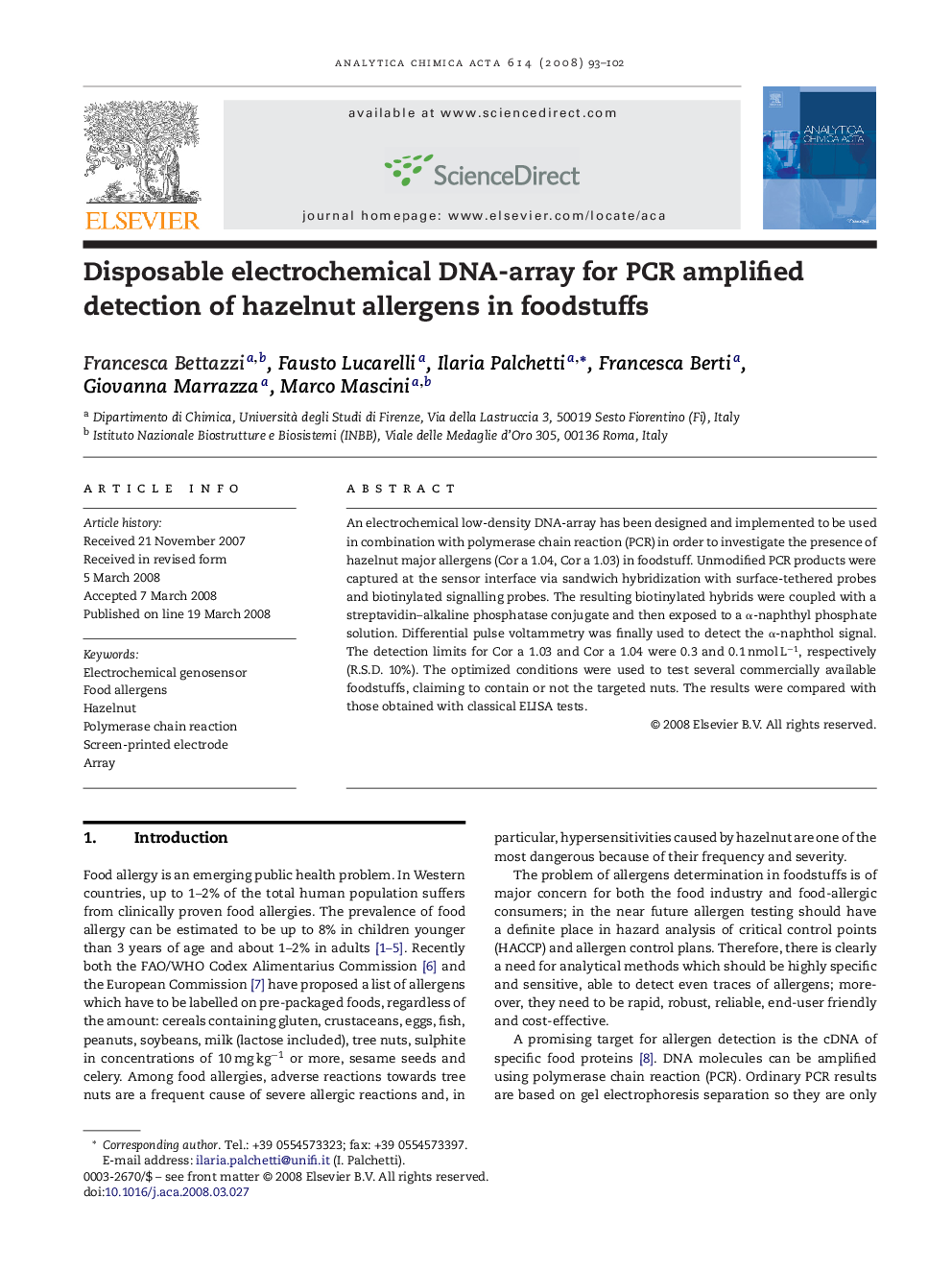| Article ID | Journal | Published Year | Pages | File Type |
|---|---|---|---|---|
| 1169667 | Analytica Chimica Acta | 2008 | 10 Pages |
An electrochemical low-density DNA-array has been designed and implemented to be used in combination with polymerase chain reaction (PCR) in order to investigate the presence of hazelnut major allergens (Cor a 1.04, Cor a 1.03) in foodstuff. Unmodified PCR products were captured at the sensor interface via sandwich hybridization with surface-tethered probes and biotinylated signalling probes. The resulting biotinylated hybrids were coupled with a streptavidin–alkaline phosphatase conjugate and then exposed to a α-naphthyl phosphate solution. Differential pulse voltammetry was finally used to detect the α-naphthol signal. The detection limits for Cor a 1.03 and Cor a 1.04 were 0.3 and 0.1 nmol L−1, respectively (R.S.D. 10%). The optimized conditions were used to test several commercially available foodstuffs, claiming to contain or not the targeted nuts. The results were compared with those obtained with classical ELISA tests.
